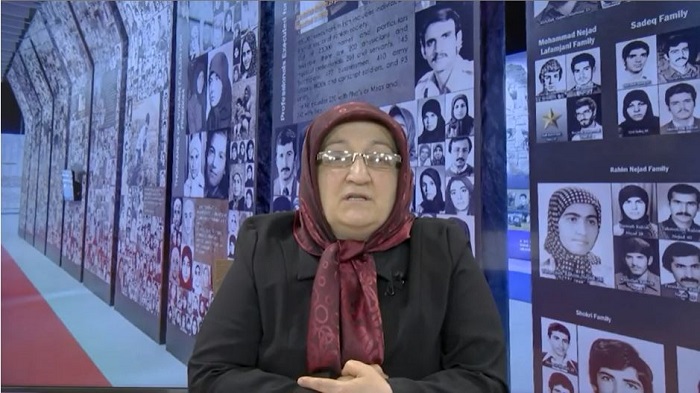
(PMOI / MEK Iran) and (NCRI): Khadijeh Borhani, a survivor of a family of 10 people who, after the anti-monarchy uprising of 1979, in which Khomeini rode the wave of the revolution and began killing those who opposed him and his ideas, especially the supporters of the Mojahedin-e-Khalq, MEK, including six of my brothers.
Systematic impunity reached its peak in June 2021 when the Iranian regime’s Supreme Leader Ali Khamenei selected Ebrahim Raisi as the new president. Raisi was a member of Tehran’s “Death Commissions,” responsible for killing thousands of political prisoners, mostly members and supporters of the People’s Mujahedin of Iran (PMOI / MEK Iran).
The elimination of the MEK
In the summer of 1988, the then-Supreme Leader Ruhollah Khomeini, issued a religious decree or fatwa, declaring members of the MEK to be ‘enemies of god’ and hence subjected to the death penalty.
Raisi has never apologized for his role in the mass killing and publicly called for the elimination of the MEK in an interview about the massacre after he took office.
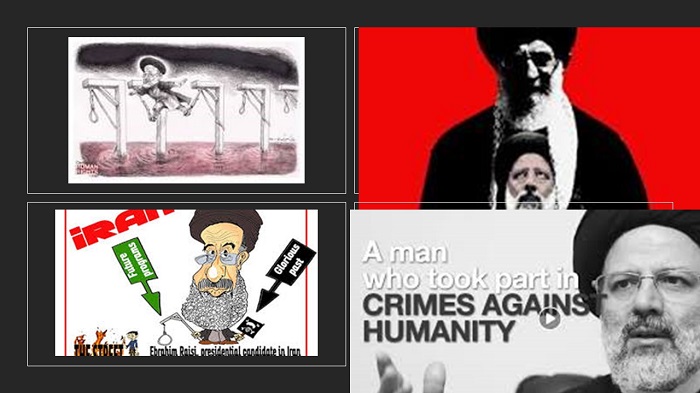
(PMOI / MEK Iran) and (NCRI): Raisi personally ordered the executions of thousands of MEK members.
Amnesty International: 1988 Massacre is a crime against humanity
Human rights organizations, including Amnesty International, consider the 1988 Massacre to be a crime against humanity. None of its perpetrators have ever been brought to justice. There is currently a growing movement to conduct an independent investigation into the mass executions and refer the perpetrators to the International Criminal Court.
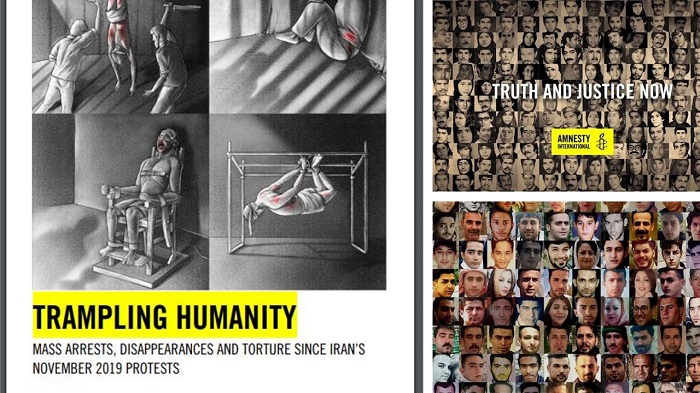
(PMOI / MEK Iran) and (NCRI): Amnesty International reports shocking Iranian regime human rights abuse.
Khadijeh Borhani, a survivor of a family of 10 people
The National Council of Resistance of Iran (NCRI) has now spoken out against the atrocities perpetrated by the regime:
“I am Khadijeh Borhani, a survivor of a family of 10 people who, after the anti-monarchy uprising of 1979, in which Khomeini rode the wave of the revolution and began killing those who opposed him and his ideas, especially the supporters of the Mojahedin-e-Khalq, MEK, including six of my brothers.” Survivor of the massacre, Borhani, explained.
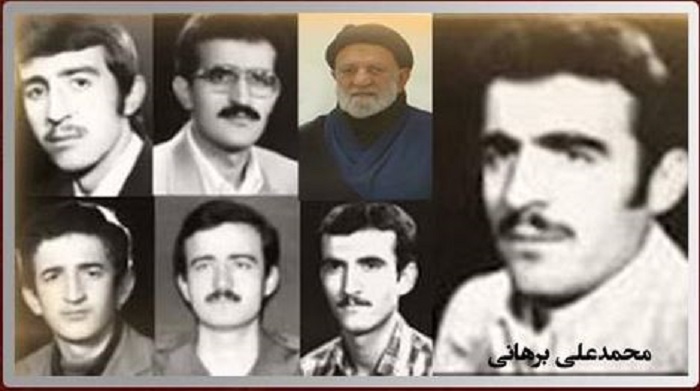
(NCRI) and (PMOI / MEK Iran): Khadijeh Borhani, a survivor of a family of 10 people.
Sentenced to death by the Death Committee
“My brother, Mohammad Hossein Borhani, who was 17 years old, was a fourth-year math student arrested on April 26, 1981, while selling the MEK newspaper… Hussein was sentenced to life in prison; however, after spending seven years, he was sentenced to death by the Death Committee in Gohardasht Prison, where Hamid Noury was facilitating the death sentences.” She continued.
While acting as an assistant to the deputy prosecutor in Karaj’s Gohardasht Prison, Hamid Noury was involved in the killings. He was in charge of a big number of people’s executions. As a culprit of the 1988 massacre, he is now on trial in Stockholm, Sweden’s capital.
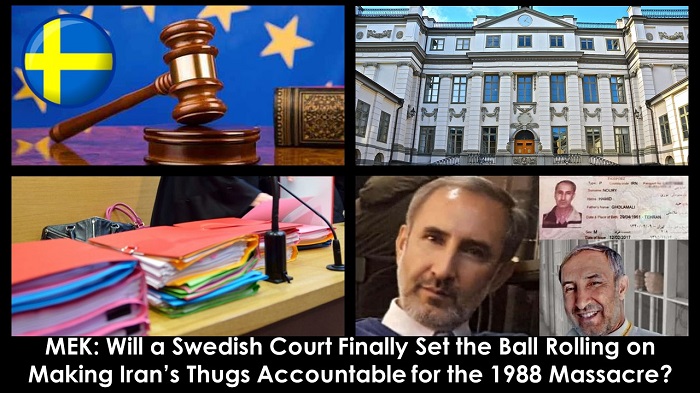
(NCRI) and (PMOI / MEK Iran): Publication of indictment and documents in the Case of Hamid Noury, Iranian Regime Henchman, by Swedish Prosecutor Authority.
MEK is the most serious threat to the clerical regime
“My other brother, Mohammad Ali Borhani, was a genius. He was studying mining at Shahroud University. In the first couple of years of his studies, he was invited to Tehran University as an assistant professor… He was arrested in August 1981, and 20 days later, after being tortured, he was executed at dawn on September 9, 1981.”
The Mojahedin organization maintained its structure after the leadership and hierarchy of all Islamic Republic opposition groups were destroyed, making it the most serious threat to the clerical authority. Because of this, the regime was particularly brutal with MEK political prisoners:

(NCRI) and (PMOI / MEK Iran): The Deputy Intelligence Minister at the time, Reza Malek, also gave a specific number, he said 33,700.
Ali shouted, “Death to Khomeini and hail to Rajavi”
“During his execution, Ali shouted, “Death to Khomeini and hail to Rajavi”. The guards immediately took him and started to severely torture him. The guards burned his back with cigarettes and etched the “Death to the hypocrites” on his body. On the morning of September 9, he was executed. His body was handed over to the family on the condition that no memorial service be held in his memory.” Borhani said.
In the 1988 tragedy, families bore great suffering due to the cruelty of the regime. Borhani explained that her father died of a heart attack as a consequence of all the suffering.
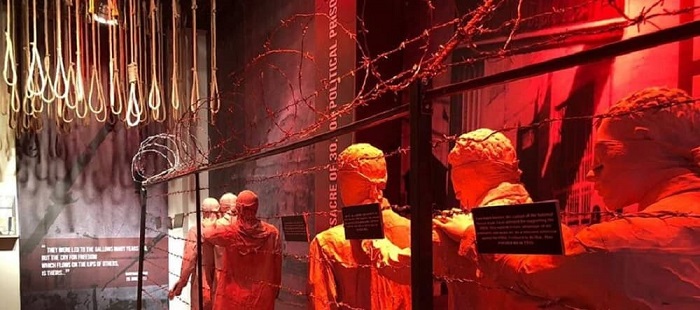
(NCRI) and (PMOI / MEK Iran): the regime’s atrocities across Iran’s death corridors during the 1988 massacre.
My father went to Ashraf in 2003
“My father went to Ashraf in 2003, and when he returned, he was severely harassed and suffered a heart attack, and died due to the pressure exerted by the regime. The regime had prevented any burial ceremony for him.”
This is just one of many witnesses who confronted the regime. As the regime has demonstrated throughout its history, those who opposed the regime were sentenced to dungeons, interrogation rooms, and eventually death.

(NCRI) and (PMOI / MEK Iran): Entrance of Camp Ashraf in Iraq, My father went to Ashraf in 2003, and when he returned, he was severely harassed and suffered a heart attack and died due to the pressure exerted by the regime.
MEK Iran (follow us on Twitter and Facebook)
and People’s Mojahedin Organization of Iran – MEK IRAN – YouTube
